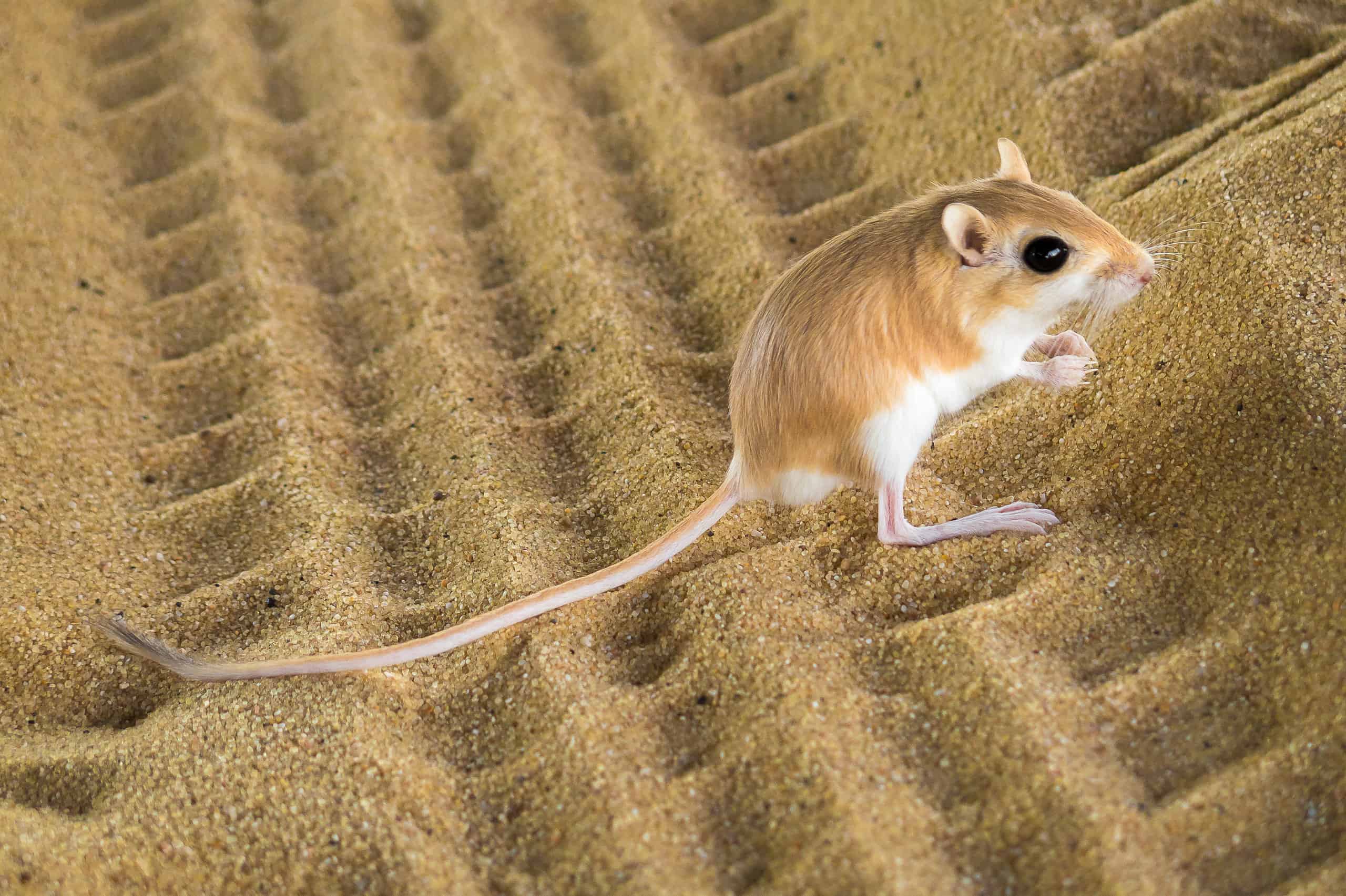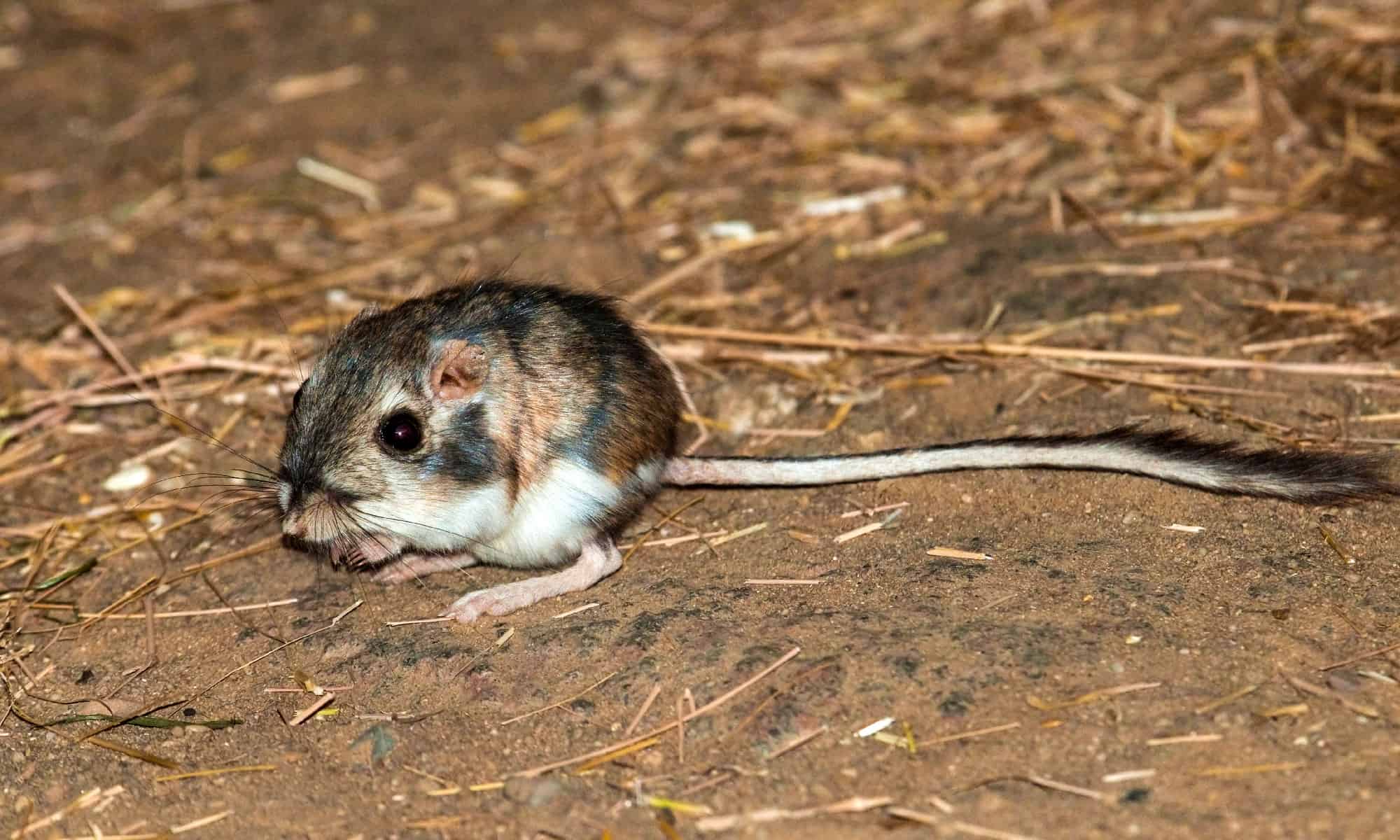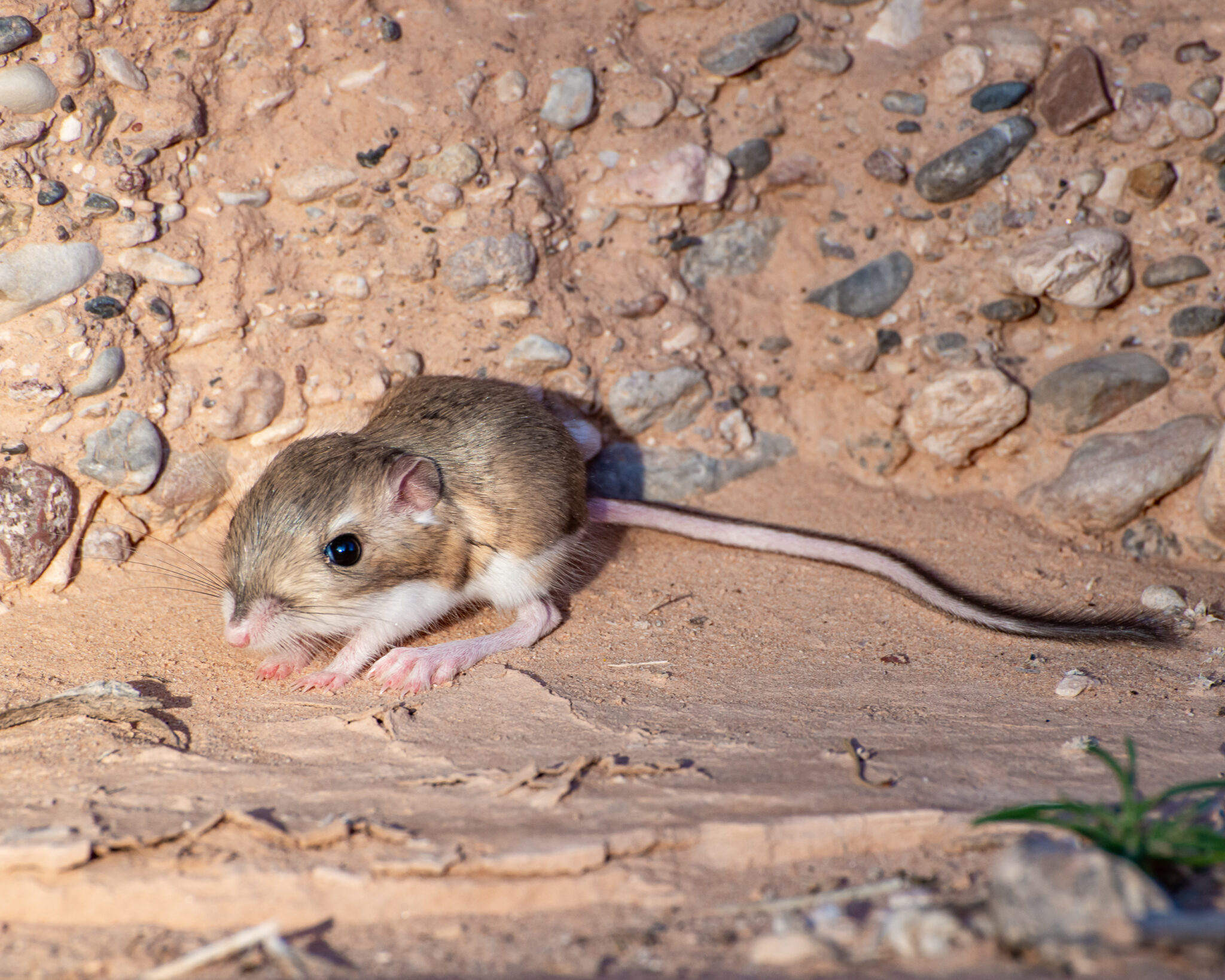Kangaroo Mouse - Tiny Leapers Of The Desert
Have you ever heard of a creature that looks a bit like a miniature kangaroo but is actually a mouse? It sounds like something from a storybook, but such an animal truly exists. We are talking about the kangaroo mouse, a rather small and quite fascinating animal that calls the arid stretches of the southwestern United States its special home. These little jumpers, in fact, represent two distinct kinds of mice, both part of a group known by the scientific name Microdipodops. They are, you see, a unique part of the natural world, perfectly suited for where they live, and they bring a certain charm to those dry, open spaces.
These tiny desert dwellers, it turns out, are a marvel of natural design, built for life in places where water is scarce and the sun can be quite intense. They are, in some respects, a testament to how life adapts to even the most challenging conditions. When you think about a mouse, you probably picture something small and scurrying, but the kangaroo mouse is a little different, possessing features that make it stand out from its more common mouse cousins. Its very name, in a way, gives you a hint about its most striking characteristic, which we will get to in a moment.
This piece of writing will tell you more about these interesting little creatures, including where they prefer to live, how they manage to survive in their environment, and what makes them so special. You will learn about their physical traits, the sort of places they inhabit, and how they relate to other small animals of the desert. So, get ready to discover more about the amazing kangaroo mouse, a true wonder of the desert landscape.
Table of Contents
- What exactly is a kangaroo mouse?
- How do kangaroo mice look and move?
- What kind of fur does a kangaroo mouse have?
- Who are the relatives of the kangaroo mouse?
What exactly is a kangaroo mouse?
A kangaroo mouse, you know, is one of two specific kinds of jumping mice, both from a group called Microdipodops. These particular animals are native to the dry, sandy areas of the southwestern parts of the United States. They are, in fact, found mostly within the boundaries of that region, making them quite specialized in their living arrangements. These creatures are, basically, small rodents that move around by jumping on their two back legs, which is pretty neat to think about, isn't it? They are only found in certain desert areas, which makes them rather exclusive to those dry, open spaces.
When people talk about a kangaroo mouse, they are usually referring to these specific kinds of mice, not the larger kangaroo rats, which are a different group entirely. The name "kangaroo mouse" comes from the way they get around, hopping on their back legs, a bit like a very, very tiny kangaroo. This way of moving, too, is a very efficient way to travel across open, sandy ground, allowing them to cover ground quickly and escape from things that might want to eat them. It's a truly interesting adaptation for their environment, you might say, and it sets them apart from many other small rodents.
These little animals are, in a way, perfectly designed for their surroundings. Their ability to jump, for instance, helps them avoid danger and find food in a place where resources can be spread out. They are, generally speaking, quite small, but their unique way of moving gives them a big advantage. So, when you hear about a kangaroo mouse, picture a tiny, two-legged jumper that calls the desert its home, a place where it has learned to thrive over a very long time.
Where do kangaroo mice make their homes?
The kangaroo mouse, it turns out, has a very particular preference for where it lives. These little creatures tend to make their homes at certain elevations, typically somewhere between 3,900 and 5,700 feet above sea level. This specific range, you see, suggests that they need a certain kind of air and temperature to feel comfortable. They also have a clear liking for a soft, sandy environment, which makes sense given their jumping way of getting around. It is, basically, much easier to hop on loose sand than on hard, rocky ground, wouldn't you say?
Beyond just the sand, the kangaroo mouse also prefers areas that have some vegetation. This means they like places where there are a few plants scattered around, not just bare desert. These plants, in some respects, provide a bit of cover, maybe some food, and perhaps even help stabilize the sand for their burrows. So, it's not just any sandy spot; it's a sandy spot with a little bit of green, too. This combination of soft ground and sparse plant life creates the ideal setting for these remarkable little jumpers, allowing them to live out their lives in peace and relative safety.
Their chosen habitat, therefore, is quite specific, reflecting their needs for both movement and shelter. They are, more or less, creatures of the sandy desert floor, where their unique physical traits can be put to the best use. It is, actually, quite amazing how specialized some animals become to their particular surroundings, and the kangaroo mouse is a very good example of this natural phenomenon. They are, essentially, living proof that even the harshest places can support life, given the right adaptations.
How do kangaroo mice look and move?
The kangaroo mouse has some rather distinctive physical characteristics that help it survive in its challenging desert environment. For one thing, they have ears that are quite large, which is interesting to think about. They also possess a head that is, in fact, rather big in proportion to their body. These features, along with a tail that is quite long, give them a unique appearance. It's almost as if they are designed with specific tools for their life in the arid lands, wouldn't you agree?
Their large ears, you know, could possibly help them hear very well, which would be useful for listening for predators or even for the sounds of insects moving around in the dark. The large head might house a brain that is well-suited for processing information about their surroundings, helping them find their way in the vast, open desert. And that long tail? Well, that is very important for balance, especially when you consider how they move. It acts like a counterweight, allowing them to make those impressive jumps without tumbling over. So, these are not just random features; they are, basically, key parts of their survival kit.
The way the kangaroo mouse moves is, perhaps, its most famous trait. They are described as "leaping bipedal rodents," which simply means they are small animals that get around by jumping on their two back legs. This hopping movement is what gives them their common name, connecting them, in a way, to the much larger kangaroos. This method of travel is incredibly effective for moving across soft sand and for making quick escapes from danger. It's a really neat trick, you might say, that helps them stay safe in a world full of hungry creatures.
What makes a kangaroo mouse so unique?
The kangaroo mouse, it's fair to say, possesses several physical features and adaptations that truly enable it to do well in its rather harsh desert environment. Its large ears, as mentioned, are probably excellent for picking up faint sounds, which is pretty useful when you are a small creature trying to avoid being someone else's meal. These ears, too, might help them to dissipate heat, which is a big deal in a hot desert. So, they are not just for hearing, perhaps.
Their long tail is another key feature that makes the kangaroo mouse stand out. This tail is not just for show; it is, actually, a crucial tool for balance when they are making their impressive leaps. Imagine trying to jump high and far without something to help you stay upright; it would be quite difficult, wouldn't it? The tail acts like a very clever balancing pole, allowing them to land gracefully and keep moving. This particular feature is, in some respects, what truly defines their unique way of getting around, making them very agile. It helps them, too, to make sudden changes in direction, which is vital for escaping from things that might want to catch them.
Beyond their physical appearance, their ability to live in such dry places is also quite remarkable. While the text doesn't go into specific details about their water needs, animals that live in deserts often have special ways of getting moisture from their food or conserving water in their bodies. This capacity to thrive where many other animals would struggle is, essentially, what makes the kangaroo mouse a true survivor. They are, therefore, a wonderful example of how life finds a way, even in the most challenging conditions, which is pretty inspiring, you know.
What kind of fur does a kangaroo mouse have?
When it comes to their outer covering, the kangaroo mouse has fur that is described as being soft and silky. This type of coat, you see, sounds quite pleasant to the touch, suggesting a fine texture. Interestingly, their relatives, the pocket mice, can have coats that vary a bit more, ranging from this silky feel to something a bit more spiny. But for the kangaroo mouse specifically, it is that smooth, gentle fur that is typical, which is rather nice to know.
The color of their coat, it turns out, is not always the same. It can vary from a lighter shade to a darker one, depending on the specific kind of kangaroo mouse and the place where it lives. This variation in color is, actually, a very clever adaptation. Imagine a creature trying to hide in the desert; if its fur matches the sand or rocks around it, it becomes much harder for predators to spot. So, the color of their fur is not just for looks; it is, basically, a very important part of their camouflage, helping them blend into their surroundings.
This ability to have different coat colors means that the kangaroo mouse can, more or less, adapt its appearance to its immediate surroundings, whether it's lighter sand or darker soil. It's a subtle but effective way to stay safe in a wide-open environment where there isn't much to hide behind. So, while their fur feels soft, its changing color is, in some respects, a very practical feature for survival in the desert, helping the kangaroo mouse to remain unseen by watchful eyes, which is pretty important for a small animal.
Who are the relatives of the kangaroo mouse?
The kangaroo mouse is part of a larger family of rodents known as Heteromyidae. This family, it turns out, includes several other interesting desert dwellers. For example, it includes the kangaroo rats, which are generally larger than the kangaroo mice but share that distinctive hopping movement. Then there are the pocket mice, and even spiny pocket mice, which are also part of this group. So, the kangaroo mouse isn't alone in its unique characteristics; it has a whole bunch of cousins that share a similar lifestyle and a connection to arid lands, which is pretty cool.
Kangaroo rats, for instance, are small rodents, mostly active at night, and they are also native to the dry areas of western North America. Their common name, like the kangaroo mouse, comes from their bipedal form, meaning they move on two feet. This suggests that the hopping way of getting around is a successful strategy for many animals in these dry places. It's almost as if nature found a good solution for desert travel and applied it to several different types of rodents in this family, wouldn't you say?
This family of Heteromyidae, therefore, represents a group of animals that have all adapted in similar ways to life in the desert. They share common traits, like living in burrows and being well-suited for dry environments, even if their exact size or fur texture might differ. It’s a bit like a big extended family, where everyone has their own personality but still shares a lot in common. So, the kangaroo mouse is part of a very specialized lineage of desert survivors, which is really quite fascinating to consider.
What kind of homes do kangaroo mice build?
Most of the animals in the Heteromyidae family, including the kangaroo mouse, have a shared habit of living in burrows. These burrows are not just simple holes in the ground; they are often described as being complex. Imagine a network of tunnels and chambers underground, providing a safe and stable place to live. These intricate homes are typically built within the deserts where these animals make their lives. So, it's not just about finding food and avoiding predators on the surface; it's also about creating a secure refuge beneath the ground.
The complexity of these burrows suggests that they serve multiple purposes. They probably offer protection from the intense heat of the desert sun during the day, acting like a natural air conditioner. They also provide shelter from cold desert nights, keeping the animals warm. Furthermore, these burrows are a very good defense against predators, giving the kangaroo mouse and its relatives a safe place to retreat when danger is near. It is, basically, their personal fortress against the elements and other creatures, which is pretty smart.
Building such elaborate underground homes requires a good deal of effort and skill, but it is a vital part of how these animals survive in their challenging environment. The soft, sandy soil that the kangaroo mouse prefers is, actually, ideal for digging these kinds of structures. So, their choice of habitat and their building skills go hand in hand, allowing them to create a comfortable and secure living space. These burrows are, therefore, much more than just holes; they are, in some respects, sophisticated homes that are absolutely crucial for the survival of the kangaroo mouse and its desert-dwelling relatives.
To sum up what we've talked about, the kangaroo mouse is a truly remarkable little creature, one of two kinds of jumping mice found in the dry parts of the southwestern United States. These small, two-legged rodents have big ears, a large head, and a long tail that helps them balance as they hop across the sand. Their soft fur changes color to help them hide, and they live in complex burrows to stay safe from the heat and from other animals. They are part of a family that includes kangaroo rats and pocket mice, all adapted to life in the desert. The kangaroo mouse, with its unique way of moving and its specialized features, is a wonderful example of how animals thrive in challenging environments.

Kangaroo Mouse Pictures - AZ Animals

Kangaroo Mouse Animal Facts - Microdipodops - A-Z Animals

Kangaroo Mouse Animal Facts - Microdipodops - A-Z Animals